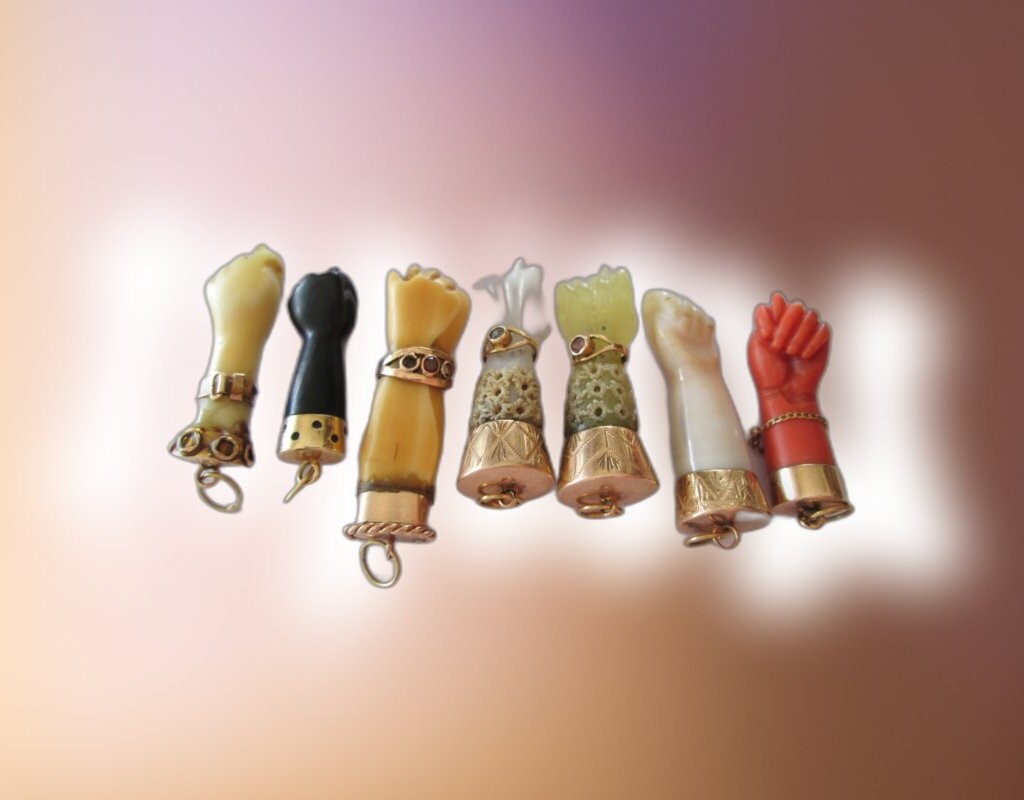In addition, images of Santiago, St. Antonio or St. Juan, called “Santiago de figas”, can be engraved on the wrists or hands, along with letters, eyes, fleurs-de-lis, crescents and other hands.
The “azabache”, coral and rock crystal used be used to make the amulets due to their potency and the positive qualities brought by their colors.
The most common colors for talismans are black, red and white, as they are the original colors.
Black Alerce
The “Black Alerce” is believed to possess a wide range of medicinal and spiritual properties.
It is popularly used to reduce menstruation, drive away demons, provoke miscarriages in pregnant women, restore virginity, alleviate dental problems and break the spell of the evil eye.
It is also valued for its aesthetic qualities, such as its dark tone, intense luster, softness and a mixture of lightness and hardness.
Historically, it has been used as an amulet to protect against the evil eye, especially in the form of figs – a Spanish amulet – beads, shells and medallions, becoming a talisman of the Road to Santiago and a shield for pilgrims.
Coral
Especially the red tones that are associated with blood, as well as pink and white, have been used since medieval times (Ferdinand IV regulated the industry). It protects from moonrises, whirlwinds, vomiting, epilepsy, lightning and storms.
It is usually worn in the form of a figa, hand, horn, or unworked branch and as a bead for necklaces in traditional costumes.
Rock crystal
Known for its hardness and transparency, it is often used in liturgical objects and royal treasures. It is a remedy against the evil eye, melancholy, thirst, dysentery, white flowers in women and lack of breast milk.
As an amulet, this transparent quartz – often called the stone of power – is used for figurines, pendants and sun charms, as well as other polyhedral and oval shapes. Throughout history, various materials have been used for protection or to attract good luck.
Ivory and bone, for example, were used to ward off danger and improve dental health. In addition, green jade, symbolizing life and fertility, mother-of-pearl, associated with the female form and agate, related to women’s breasts, have been used for various reasons.
Jade is to attract luck, while mother-of-pearl is rarely found in Spanish amulets and agate is used to counteract snake bites, improve vision and reduce fever. Agate is to make women infertile.
Porcelain, wood, or glass
Finally, porcelain, wood and glass replaced coral, azabache and rock crystal as alternative, less expensive and less durable materials made for smaller budgets.
Figs were used mainly by girls and women to ward off the evil eye, jealousy and envy, as well as to dispel witchcraft spells.
They have a handle or hole to carry chains and charms and sometimes two central perforations to attach them to clothing or hats. The cylindrical and prismatic ornaments, of silver, gold, brass and plated metal, have various aspects.
Some of them carry a cuff of small lettuces on the sleeve and others feature openwork, chiseled designs, or are adorned with enamels, layered details, pearls, embellished borders, stars, rosettes and geometric, vegetal, floral and corded motifs.
In addition, they sometimes sport molded or pierced wrists, as well as bracelets studded with precious stones, chains and gilded studs.
They also occasionally show rings, rings between the fingers and pieces of coral, as well as phalanges that are not always correctly positioned, but rather extended and in unusual positions.
Others, especially those from Castilla-La Mancha, are elongated and flat, with stylized shapes, light coloration and herringbone incisions. They may also have straight cuts and a coarse and poorly defined execution.
In the 18th and 20th centuries
The higas became simpler and more basic, although there were some exceptions in the 19th century when older designs were reproduced. To lessen the obscene connotations, some of these designs included images of saints on the forearm.
Over time, the ornaments, engravings and images of saints were removed to make the symbol simpler. The higas, a term that also includes other horn-shaped amulets, are still made today in Galician and Asturian workshops.
People remain devoted to an object that serves as a decorative jewel, a protective amulet and a link to our most basic origins.
Related post





